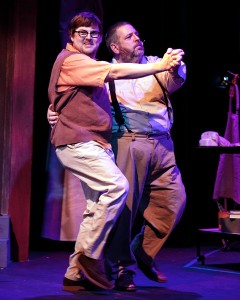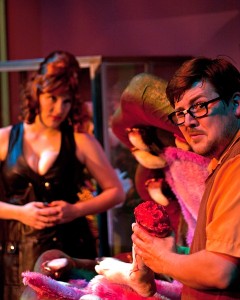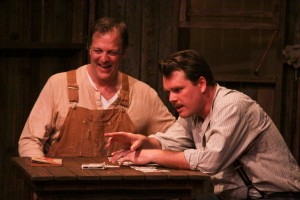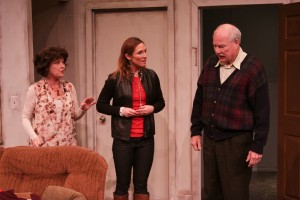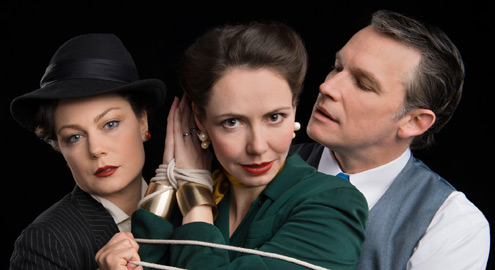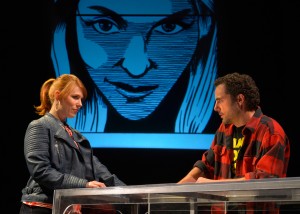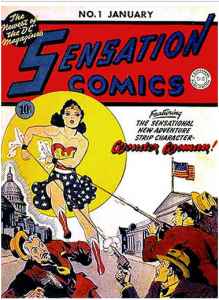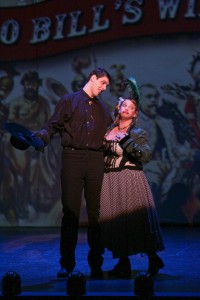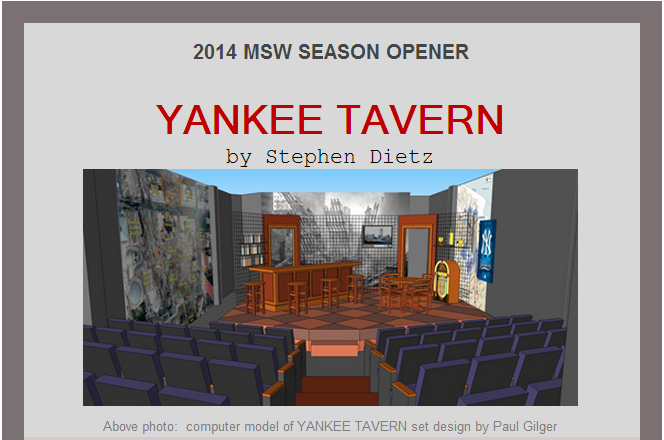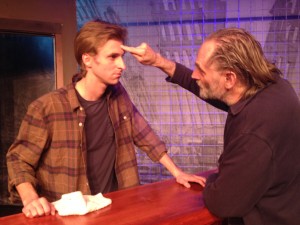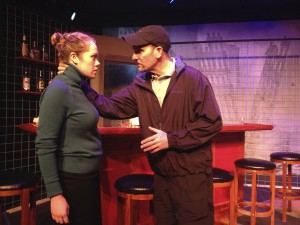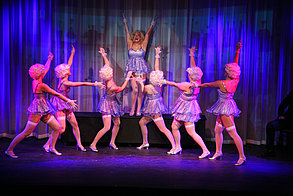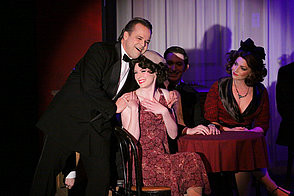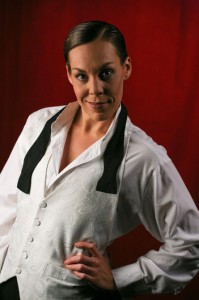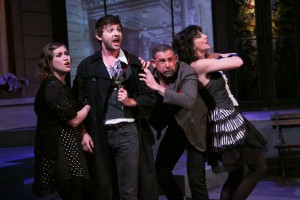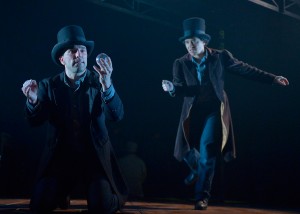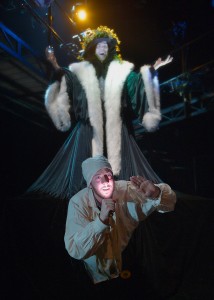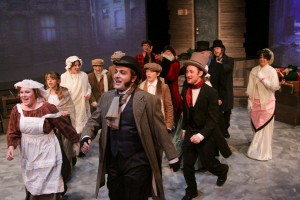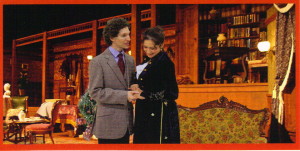Reviewed by Suzanne and Greg Angeo
Members, San Francisco Bay Area Theatre Critics Circle
Shoppin’ and Boppin’ – This Horror Rocks
Andrews Hall is located inside the Sonoma Community Center, a beautiful, century-old Greek Revival building in downtown Sonoma. It’s a lovely drive from Santa Rosa down picturesque Highway 12, through bucolic scenes of vineyard and farmland. This serene landscape does little to prepare you for what’s in store, however, if you’re planning to see Little Shop of Horrors, presented at Andrews Hall by the Narrow Way Stage Company in its second season with the Sonoma Theatre Alliance.
This perky yet darkly comic rock-and-roll musical is based on Roger Corman’s 1960 film of the same name. It was adapted for the stage and first opened off-Broadway in 1982 and ultimately ran for five years. It garnered numerous awards, due in large part to the catchy songs by Howard Ashman and Alan Menken, who drew heavily from early Motown and other pop music from the early 60s. This ambitious production by Narrow Way is a fun and lively show, a pleasant way to spend an afternoon or evening. The best efforts of cast and crew are only partly hampered by the lack of space, which presents a challenge in shows of this kind. Especially if there’s a large, funky flesh-eating plant that takes up most of the stage.
The setting is a failing Skid Row flower shop. Harry Duke as the schlumpy shopkeeper Mr Mushnik displays good instincts in presenting his character, who’s fallen on hard times. Duke seems to be channeling Tevye in Fiddler on the Roof. His perfect Russian Jewish accent pays off handsomely and his soft baritone lends a nice quality to the show.
Mushnik’s sad sack shop assistant Seymour (Matlock Zumsteg) finds an odd little plant one day during an eclipse, and brings it back to the shop. He soon discovers it needs more than just water and sunshine…it needs human blood in order to thrive. Seymour does his best to oblige, and the plant not only grows large and menacing, but develops a bellowing voice, demanding (in raucous song) even more from its hapless caretaker. Seymour makes a Faustian bargain with the beastly plant – success in return for human sacrifice. A perfect setup for laughs and rollicking rock and roll music, right?
Zumsteg gives Seymour a shy, nerdy likeability that goes beyond his comic strip confines. His voice is well suited for the score, strong and steady. Seymour has an unrequited crush on shop girl Audrey (Nora Summers) who in turn has a weakness for no-goodnicks. Case in point: her current boyfriend, the sadistic biker-dentist Orin (Dallas Munger) who keeps her in black eyes and ace bandages. Summers plays Audrey as sort of a trashy-sweet innocent kid, not easy to pull off, but she does it and she’s the heart of the show. Munger, as Orin, comes off like a crazed hipster in black leather who just happens to carry a small can of nitrous oxide for a quick blast wherever he goes. Munger hams it up with mad abandon, but not-so-divine justice is waiting just around the corner for Orin.
The events in the story give theatre companies ample opportunity to explore their creativity in crafting puppets to represent the ever-growing ghoulish vampire plant, and Narrow Way gets to show their stuff in this regard. Music and voiceover artist Butch Engle gives the ferocious fern plenty of Wolfman Jack soul and campy attitude. He’s quite simply the best thing in the show and worth the price of admission. Engle is discreetly tucked away upstage on scaffolding above the action, along with the Skid Row Band, which is equally fabulous under the able direction of Justin Pyne. The score is simply infectious, and it’s almost impossible to resist the urge to jump up and dance on your chair. Songs like the rockin’ “Skid Row” performed by the company, Munger’s anthem “Dentist!” and the lovely, wistful “Somewhere That’s Green” sung by Audrey. Even perched on high way back upstage, you can still see the band, and at times Engle is more fun to watch than the plant.
Regie Padua, Alexis Long and Laura Levin as Ronette, Crystal and Chiffon – three street urchins that form a sort of doo-wop girl group Greek chorus – interpret the action onstage for the audience throughout the show. As characters, they provide a great bridge between scenes. As singers, they are only adequate; pitchiness and lack of sustained vocal quality create an uneven feel to the show.
Choreographer Alise Girard, so splendid in shows with large casts and elaborate dance numbers, isn’t as challenged with the small cast and stage this time, but does a commendable job nonetheless. Director Christopher Ginesi makes good choices and takes some creative risks that work most of the time. It takes ingenuity to fit a big show into a small space and have it work this well. With all its imperfections, this Little Shop is really entertaining and well worth a visit.
When: Now through May 4, 2014
8:00 p.m. Thursdays, Fridays & Saturdays
2:00 p.m. Sundays
Tickets $20 to $30
Andrews Hall at Sonoma Community Center
276 East Napa Street
Sonoma, CA 95476
(707) 938-4626


